

CarExpert.com.au
The CarExpert team's favourite cars of 2025
2 Days Ago

Marketplace Editor
The iconic Audi RS6 super wagon is turning 20 this year.
With four generations spanning across those two decades, the RS6 has become a cult hero for offering supercar performance in a family-friendly package, and is an icon for wagon lovers worldwide.
Here, we’ll celebrate the RS6 nameplate’s 20th anniversary by stepping back in time and remembering each generation of this lauded badge.
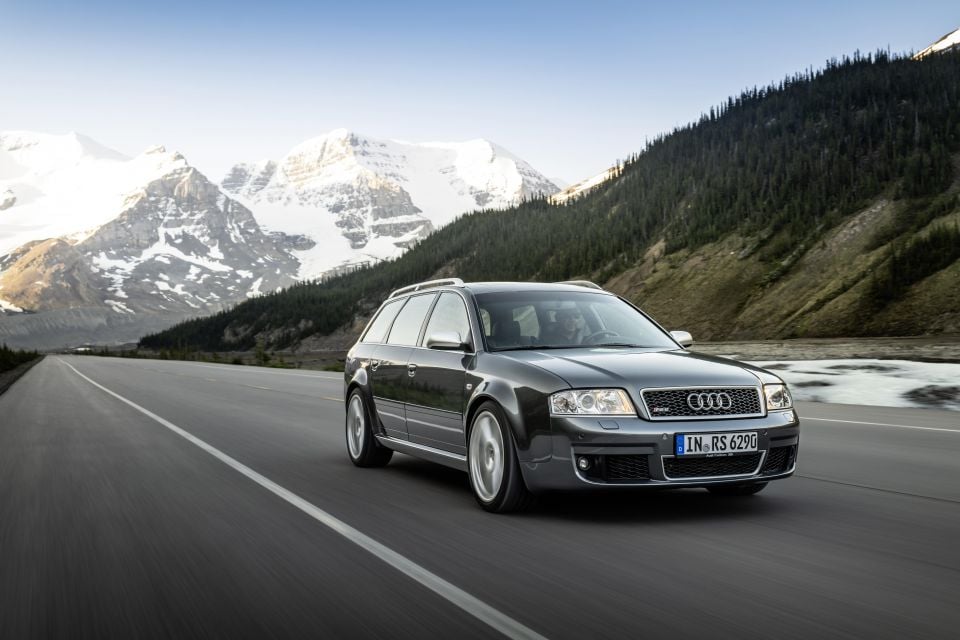
After winning the world over with the RS2 Avant and first-generation RS4 Avant in the 1990s, quattro GmbH (now Audi Sport) set out to engineer the next chapter in its performance passenger car story.
The first-gen Audi RS6 saw the regular A6 sedan and Avant go through a series of enhancements, including adaptation of the engine, suspension and transmission to make the humble German mid-sizer a proper performance car.
New side skirts, wider sills, 18- or 19-inch alloy wheels, as well as two large oval tailpipes “emphasised its sporty ambitions”, according to Audi.
As for the powertrain, Audi started with the 4.2-litre V8 used in the S6 – which originally was borrowed from the A8 limousine – and strapped two turbochargers to it.
Originally, the new engine didn’t fit in the A6’s engine bay, so quattro GmbH extended the front end of the base car to give 4cm more installation space.
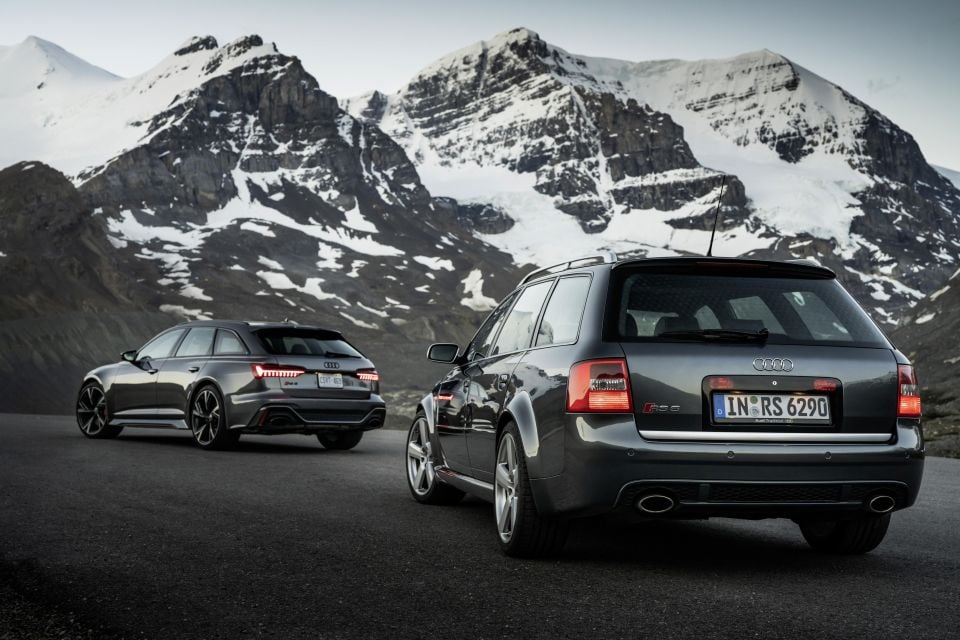
Developed in partnership with UK-based Cosworth, a subsidiary of Audi AG at the time and up until 2004, the bi-turbocharged 4.2-litre V8 put out 450PS (331kW) and 560Nm which made the first RS6 the most powerful Audi model at the time.
The C5-generation Audi RS6 featured a five-speed torque-converter automatic with five driving modes, and quoted an impressive 0-100 time of just 4.7 seconds, with a top speed limited to 250km/h (155mph). As you’d expect, the RS6 came as standard with Audi’s Quattro all-wheel drive system.
In order to help the RS6 strike the perfect balance between comfort and sportiness, even in daily driving conditions, Audi utilised its newly-developed Dynamic Ride Control (DCC) suspension technology which “reduces roll and pitch movements in sporty driving, both on straightaways and in curves”, according to Stephan Reil, former RS6 development lead and now head of technical development at Audi’s Neckarsulm facility.
DRC consists of steel springs with two diagonally-opposite hydraulic shock absorbers which counteract motion in the vehicle’s body without any “time lag” and without electronics.
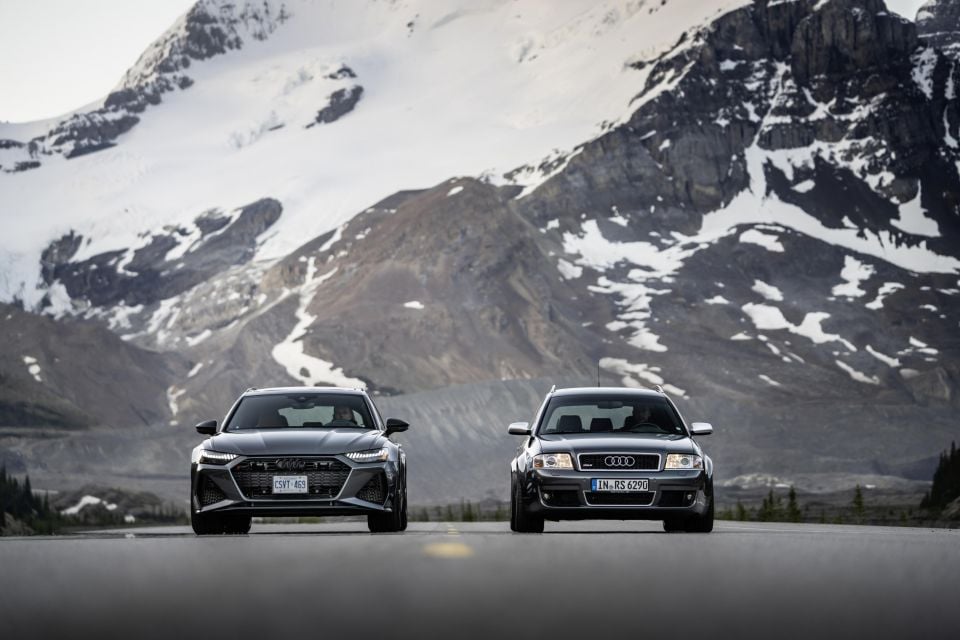
All C5-generation RS6 units were made on the production line and by hand. Partial assembly would be completed on the production line and then the suspension, RS-specific components and interior decor elements would be installed in a hall adjacent to the Neckarsulm factory, where quattro GmbH workers would spend around 15 hours finalising each unit on a hydraulic lift.
The first iteration of Audi RS6 was also the only generation to have a racing car version, in the form of the RS6 Competition. A 475PS (349kW) version of the 4.2 V8 successfully beat out the competition “with equal displacement” at the 2003 Speed GT World Challenge.
In the latter stages of its life, the RS6 ‘plus’ offered a beefier 480PS (353kW) version of the bi-turbo V8, with torque remaining at 560Nm.
Audi upgraded the RS6 plus with more standard equipment that was previously optional, and the top speed could be raised from 250km/h to a supercar-rivalling 280km/h.
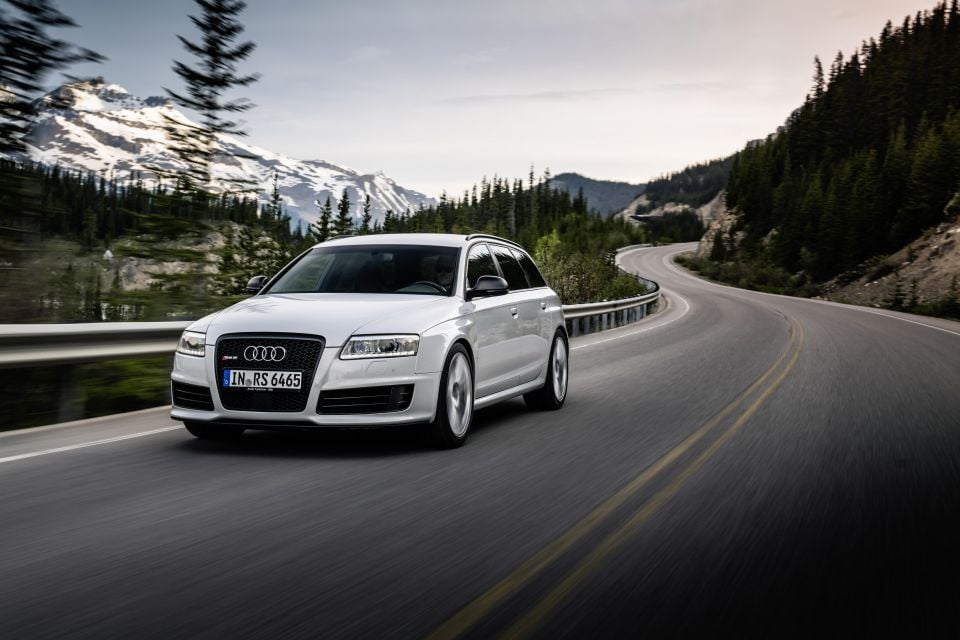
Six years after the first generation was released, Audi had another crack at the RS6 formula and once again offered sedan and Avant wagon versions.
For this iteration, Audi shoehorned the 5.0-litre V10 used in its R8 supercar as well as the Lamborghini Huracan, and if that wasn’t enough, strapped on two turbochargers.
That gave the second-gen RS6 a massive 580PS (426kW) and 650Nm, which exceeded even the most powerful R8 GT (560PS, 412kW).
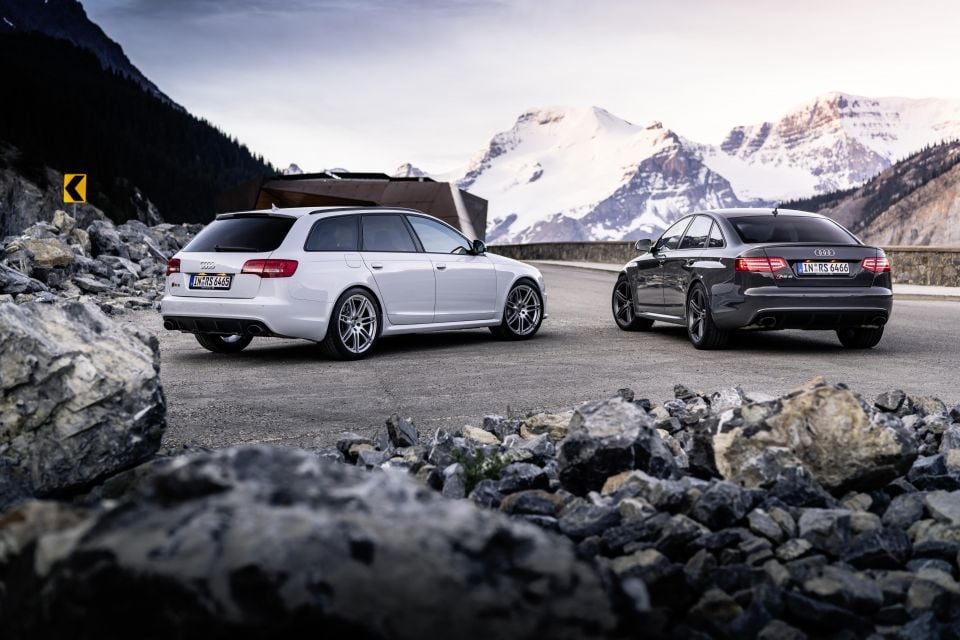
For the C6-generation Audi used a six-speed automatic which was “substantially reworked” to handle the immense power on tap, including developments to the cooling, shift speed and power distribution.
The RS6 sedan could dash from 0-100 in 4.5 seconds, with the Avant marginally slower at 4.6 seconds. At launch the RS6 came as standard with a limited top speed of 250km/h, which could be upped to 280km/h as an option. Later, the RS6 plus achieved over 300km/h.
Audi’s V10 engine weighed 278kg and featured a motorsport-inspired dry sump lubrication method allowing the big engine to sit low in body body and lower the centre of gravity, and could supply up to 1.2g of oil “for longitudinal and lateral acceleration”.
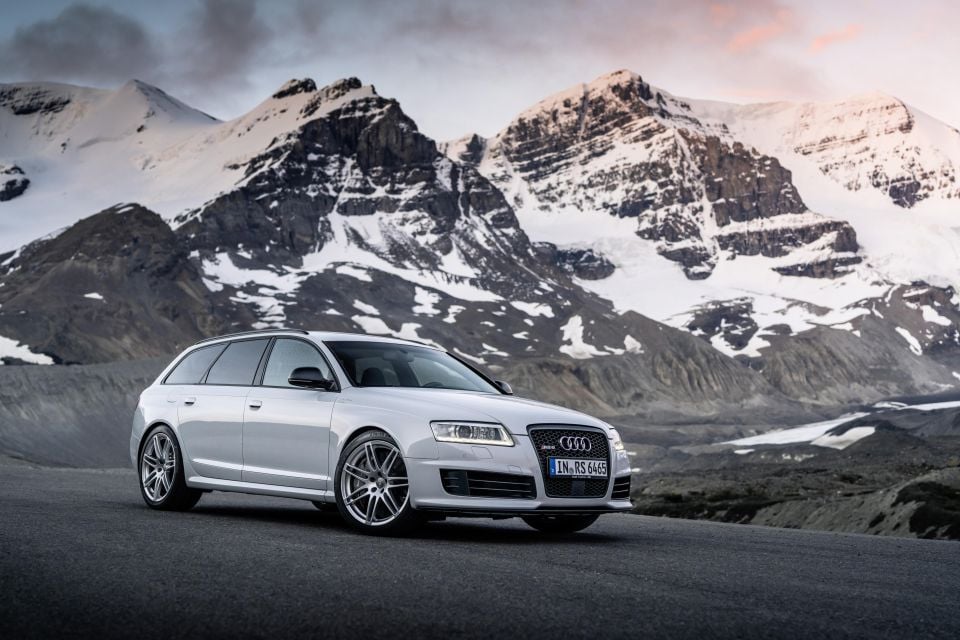
The C6 generation offered 420mm front and 356mm rear carbon-ceramic brakes as an option, and the DRC suspension system was featured as standard, with adjustable shock absorbers offered as an option.
Like the original, the 2008 Audi RS6 featured a “subdued” design though was set apart from regular A6 models with its widened fenders as well as up to 20-inch alloy wheels with 275/35 tyres. The vehicles were partially assembled on the production line and then finalised at the adjacent hall by quattro GmbH workers, again like its predecessor.
Audi sent off the C6 generation with the RS6 plus Sport or RS6 plus Audi Exclusive, depending on market. Just 500 units rolled out of Neckarsulm with a numbered interior plaque, special alloy wheels, a leather instrument panel and floor mats with the RS6 logo.

As a follow-up to the stonking 5.0-litre V10, the C7 Audi RS6 went from the model line’s largest engine ever to the smallest, reducing capacity to 4.0 litres, eight cylinders, but again with two turbochargers.
Not only was capacity dropped, but the RS6 Sedan was no more with the C7 iteration, with the Avant wagon soldiering on as the only available variant. However, Audi created the coupe-styled RS7 Sportback as a spiritual successor.
Power with the new engine reduced by 20PS to 560PS (412kW), but torque rose to 700Nm. The C7-gen RS6 also employed a number of weight-saving measures that made it up to 120kg lighter than its predecessor, and the front:rear weight distribution was improved to 55:45.
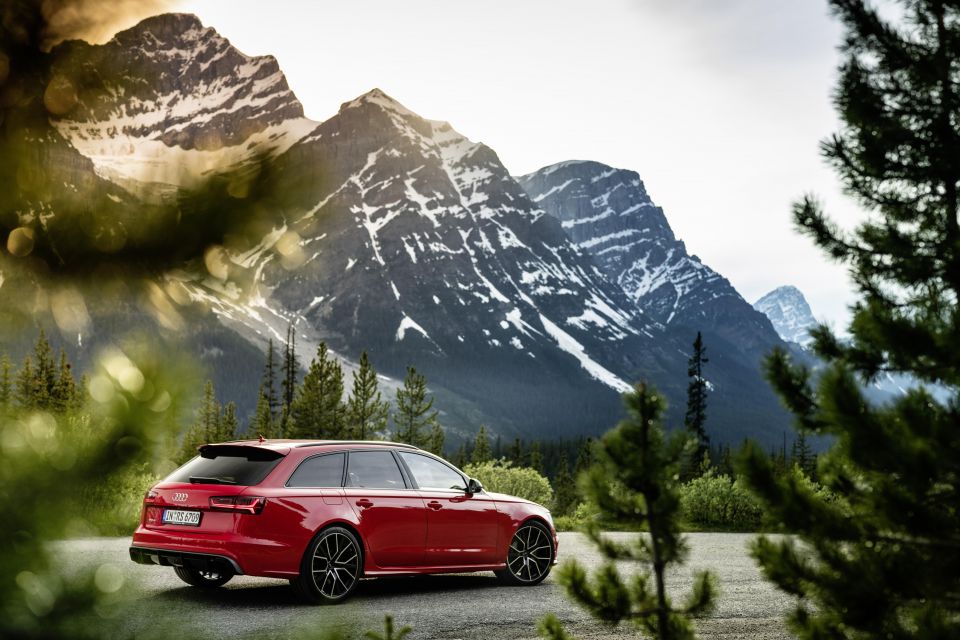
This was achieved through a higher proportion of aluminium in the construction, including all attached RS parts, and the lighter bi-turbo V8 engine sitting 15 centimetres further back in the engine bay.
A new eight-speed tiptronic automatic sent grunt to a quattro all-wheel drive system, with 0-100 taking a claimed 3.9 seconds – half a second quicker than its predecessor. The third-generation RS6 could hit an eye-watering 305km/h, too.
The lighter body as well as new cylinder deactivation technology meant the C7-generation RS6 was up to 30 per cent more fuel efficient than its predecessor, the latter feature allowing up to half its cylinders to be shut off under low engine load, effectively making it a four-cylinder.
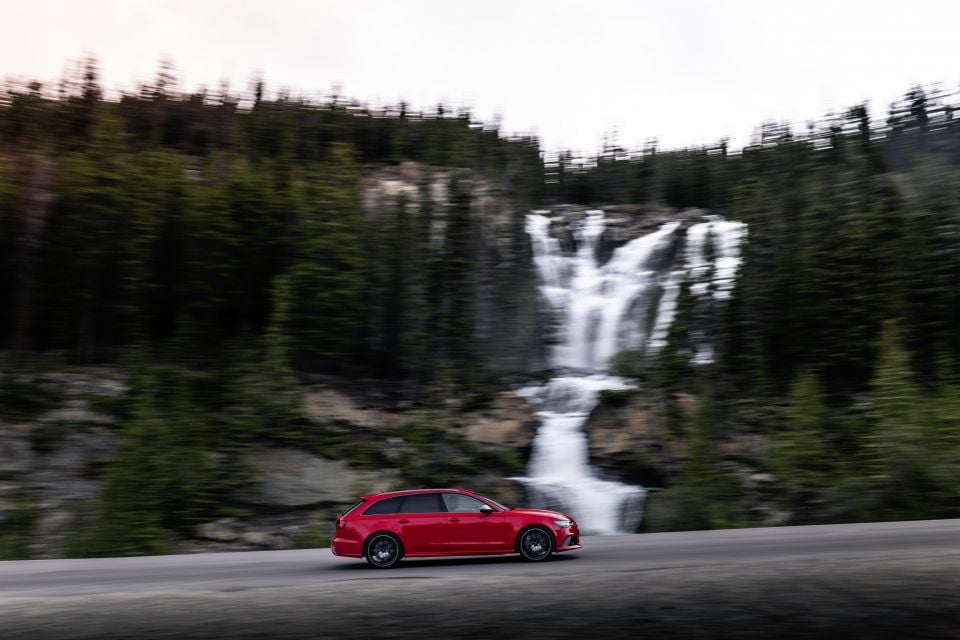
For the first time, adaptive air suspension was offered as standard equipment. The RS-specific system rode 20mm lower than other models and featured “sportier tuning”, with a towing hitch also made available for the first time in the nameplate’s history.
Once again, carbon-ceramic brakes (420mm front and 365mm rear) were available as an option, and like each iteration before it would switch halls during assembly in Neckarsulm.
Audi says the C7 became a best-seller and market leader in the performance wagon segment, and resonated around the world.
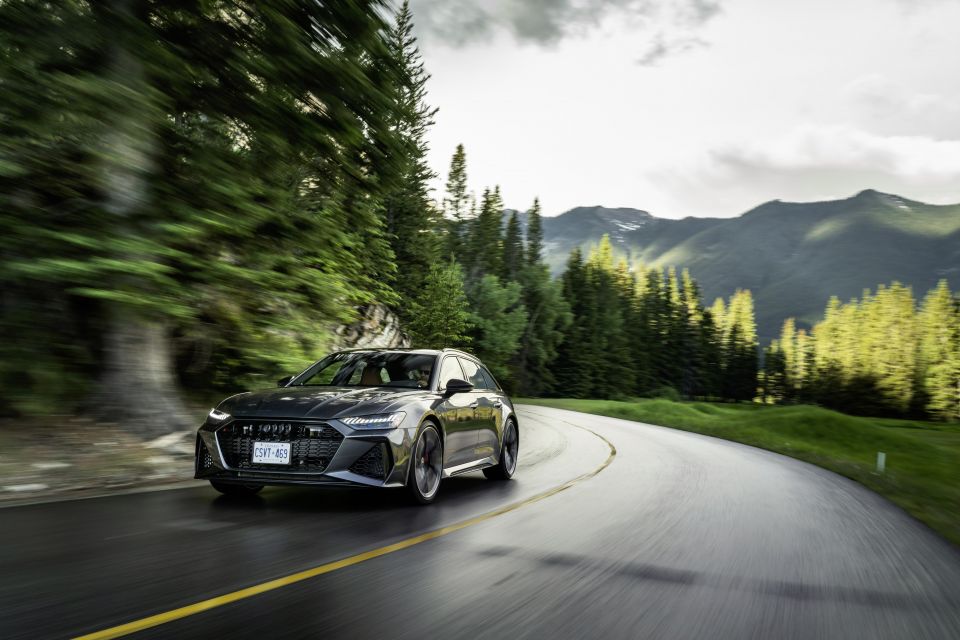
And now we arrive to the current generation.
The C8-gen Audi RS6 Avant launched globally in 2019, and built upon the foundations laid by all its predecessors.
Once again the RS6 features a 4.0-litre bi-turbo V8 under the bonnet, now pumping out a massive 600PS (441kW) and 800Nm and bolstered for the first time by 48V mild-hybrid technology.
The added grunt bolsters the slight weight gain over its forebear, with the car needing just 3.6 seconds to accelerate from 0 to 100km/h, and 12 seconds to reach 200km/h.
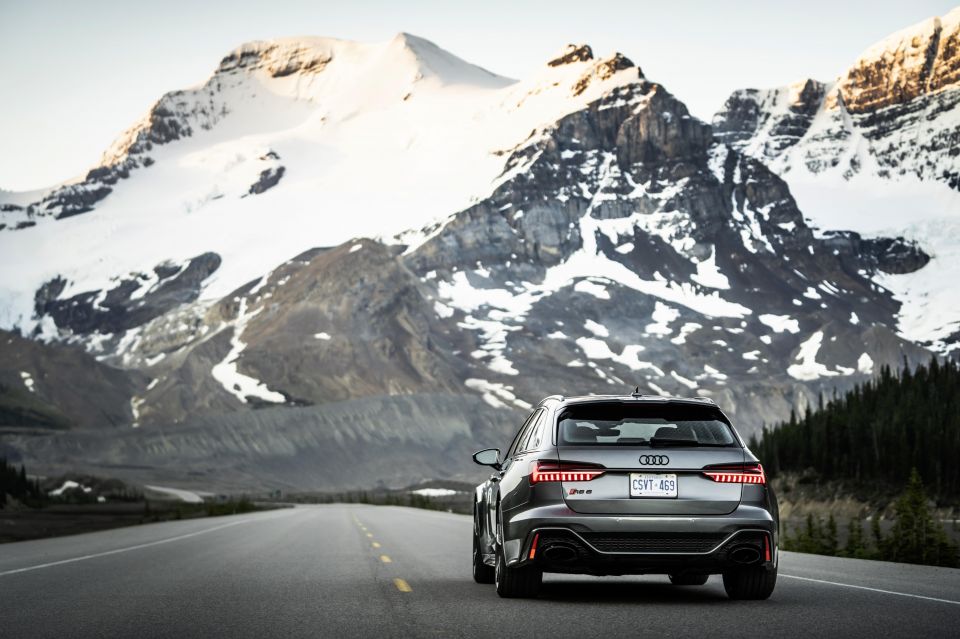
In addition to the swish, fuel-saving 48V MHEV setup, the C8-generation RS6 Avant debuted a number of new technologies.
All-wheel steering became available for the first time, not only enhancing stability at higher speeds by turning the rear wheels in the same direction as the fronts, but also makes parking and low-speed manoeuvres easier by turning the rear wheels in the opposite direction to the fronts, reducing the turning circle.
There’s also the availability of Matrix LED headlights with laser lights shared with the RS7 Sportback.
The previous generation’s move to offer a tow bar as an option has resonated with customers as well, with Stephan Reil saying “more than half of our European customers order a trailer hitch”.
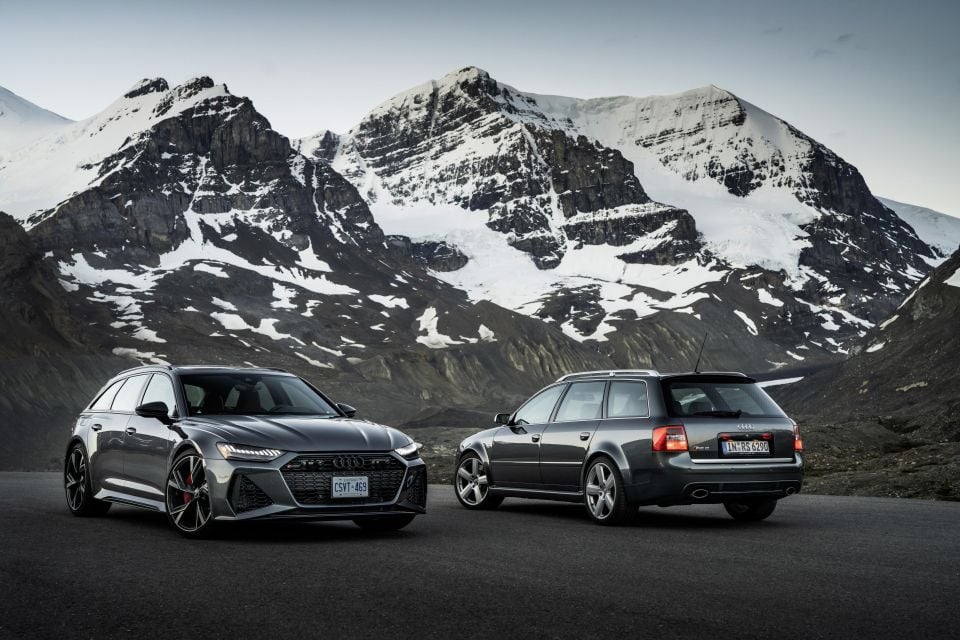
Unlike its predecessors, which all featured more subdued styling compared to non-RS counterparts, the C8-generation RS6 Avant really distinguishes itself from the regular A6 family.
Audi says only the roof, front doors and tailgate are the only exterior elements shared with the regular A6 Avant, with the other components altered specifically for the RS and as a result the vehicle has been widened by a significant 8cm. The current car features a model-specific bonnet for the first time, too.
Depending on market, standard 21-inch wheels with 275/35 tyres are standard, with 22-inch units shod in 285/30 rubber optional. In another change to the bloodline, the C8 RS6 is no longer manufactured in two stages in separate halls, rather rolled off the assembly line in Neckarsulm in showroom-ready form.
The current iteration of RS6 Avant also marked a return for the nameplate in the US for the first time since the original.
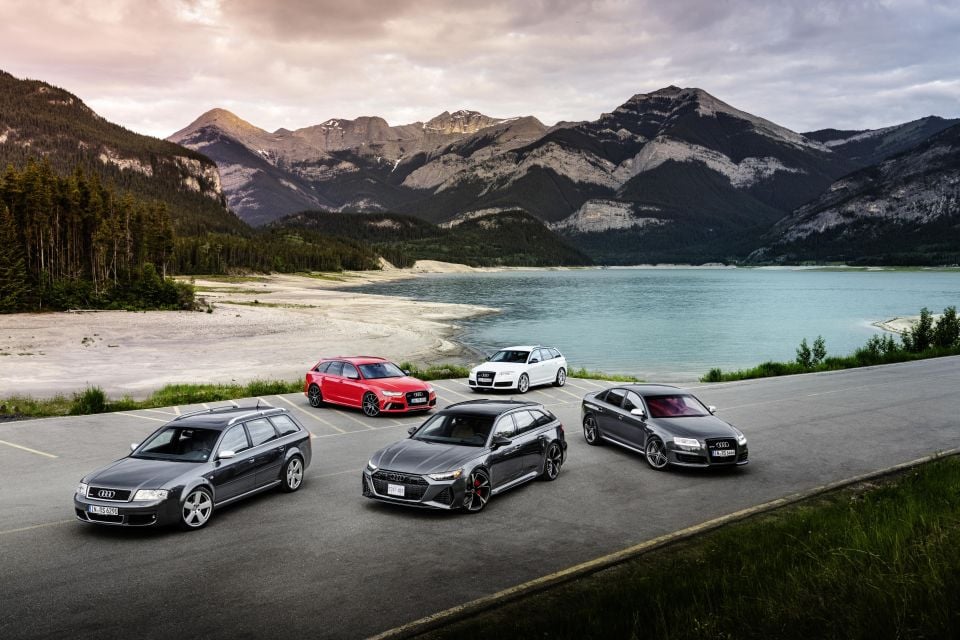
In Australia, the current Audi RS6 is arguably the most affordable ever – incredibly.
Priced from$226,891 plus on-road costs (it originally launched at $216,000), the 2022 Audi RS6 Avant is significantly more affordable than the previous-generation RS6 Performance ($248,355 for MY18), and isn’t far off the figure asked by the original RS6 Avant that went on sale in 2003 ($225,100) – keeping inflation in mind, it ain’t bad.
It’s also only one of two Avant versions of the current A6 on sale in Australia, the other being the jacked-up A6 allroad.
Alles Gute zum Geburtstag, Legende!
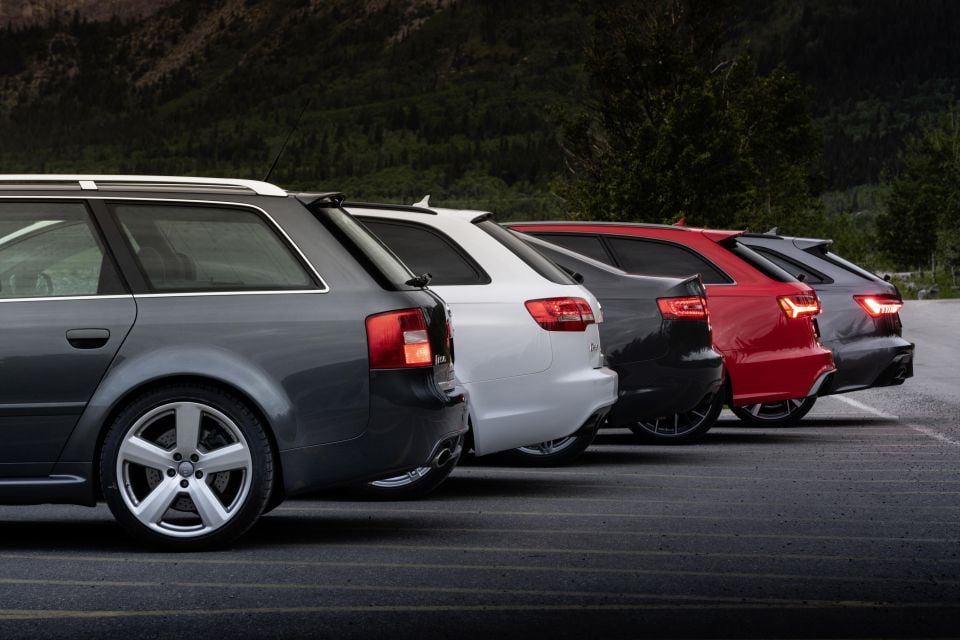
Click the images for the full gallery
MORE: Everything Audi RS6
Where expert car reviews meet expert car buying – CarExpert gives you trusted advice, personalised service and real savings on your next new car.
James Wong is an automotive journalist and former PR consultant, recognised among Australia’s most prolific motoring writers.


CarExpert.com.au
2 Days Ago


Max Davies
8 Days Ago
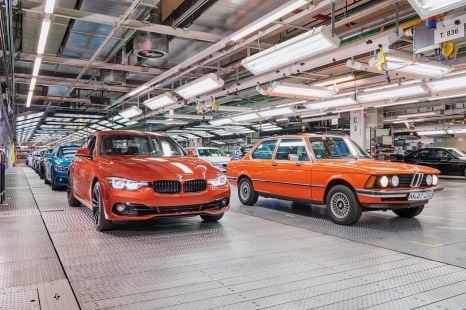

Ben Zachariah
11 Days Ago
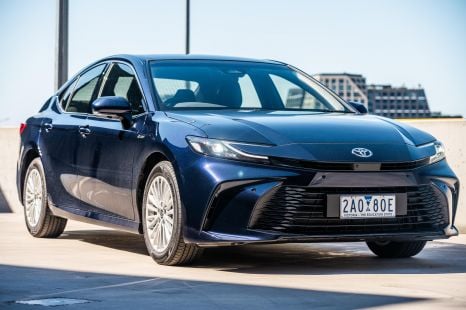

William Stopford
2 Months Ago
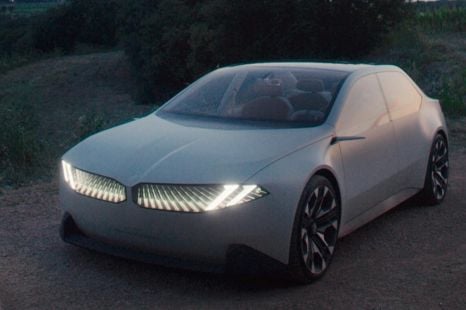

Damion Smy
2 Months Ago
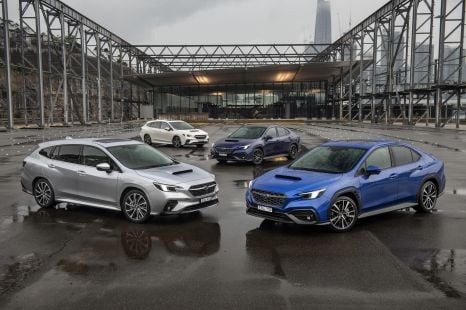

Max Davies
2 Months Ago